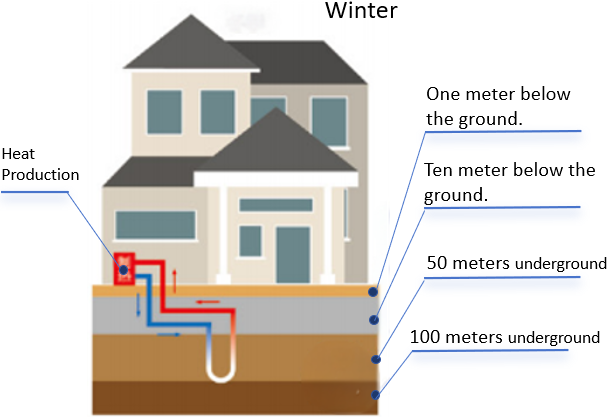



Ground source heat pump technology generally adopts vertical buried pipe arrangement, the requirements to ensure that the chemical properties of the buried pipe is stable and corrosion-resistant, the performance indicators and quality of the pipe material has high requirements. Ground source heat pump pipes and fittings produced by our company are made of high-quality ground source heat pump heat exchanger pipe special material, which is extruded and molded by plastic extruder in one time.
In summer air-conditioning, the residual heat in the room is transferred by a heat pump and then released to the soil or groundwater through a buried heat exchanger or water system, while storing heat.

Cooling mode
One meter below the ground:
Its temperature remains essentially at the level of the year-round average atmospheric temperature.
Ten meter below the ground:
The temperature of the thermostat layer is not affected by the atmospheric temperature and remains at 15℃-18℃ all year round.
50 meters underground:
Maintains 17℃~19℃ throughout the year
100 meters underground:
The temperature of the geothermal layer at 100 meters below ground increases by 3°C for every 100 meters downward
In winter heating, heat is extracted from the soil or groundwater through a buried heat exchanger or water system, elevated by a heat pump, and supplied to heating users while storing cold.

Heating mode
One meter below the ground:
Its temperature remains essentially at the level of the year-round average atmospheric temperature.
10 meter below the ground:
The temperature of the thermostat is not affected by the atmospheric temperature and is maintained at 15°C to 18°C throughout the year.
50 meters underground:
Maintains 17℃~19℃ throughout the year.
100 meters underground:
The temperature increases by 3°C for every 100 meters down the geothermal layer.